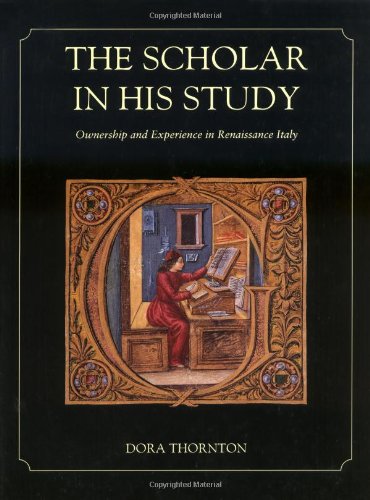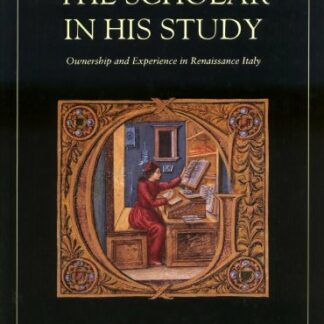Description
Ownership and Experience in Renaissance Italy
In fifteenth- and sixteenth-century Italy, many leading citizens constructed and furnished distinctive studies for themselves. The study was an individually designed room for private and social use — as an office, library, a family archive or treasury, as the nucleus of an art collection, or as a space for contemplation. This book is an engaging account of the Renaissance Italian study and its contents. Generously illustrated with depictions of studies and the precious and unusual objects they contained, the book examines the significance of the study to its owner and visitors, its structure and location, and the prized possessions that might fill such a special room.
To own a personal study was to lay claim to the civility and educated tastes that defined the ruling elite of the Italian Renaissance. Studies were created by members of the administrative and professional classes, notaries, doctors of law and medicine, clerics, patricians, merchants, and bankers. They were also owned by scholars, university teachers and students, artists and craftsmen. In this book, Dora Thornton draws on a variety of sources — inventories, account books, contemporary literature, visual representations of scholars at work, and surviving art objects — to document activities and collections associated with the study. She shows how urban elites, as well as rulers and patrons, contributed to the development of the study, a fascinating feature of Italian Renaissance culture that came to be widely imitated throughout Europe.


![Agatha Christie's Poirot: The Adventure of the Western Star [VHS Tape]](https://musicelle.com/wp-content/uploads/2022/12/419FEAPHE5L-218x324.jpg)
![Little ballerina, [Paperback] Dorothy Grider](https://musicelle.com/wp-content/uploads/2023/01/51MaPQD0DsL-324x322.jpg)
![MASTERPIECE COLLECTION FOR PIANO Volume 2, Minstrel Press MP2100 [Sheet music] WALTER COLE](https://musicelle.com/wp-content/uploads/2023/02/woocommerce-placeholder-305-324x324.png)

Reviews
There are no reviews yet.